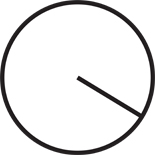

RANGE: Local, Distant, Fringe is a three-part, location-based series of radio transmissions that explores the phenomenon of signal strength. The series seeks to break, bend, and highlight the economic, political, and technical dimensions of the electromagnetic spectrum.
RANGE uses the criteria found in proprietary mapping software that plots radio station coverage areas to analyze the importance of place for radio broadcasts. This software takes into account transmitter power, antenna height, frequency, antenna pattern, and etc. Commercial and community stations use this data to determine potential listeners.
The coverage areas are defined as:
A station’s signal strength broadly delimits that station’s territories. These territories further impact policy (i.e. FCC regulation, spectrum licensing), station-specific power (i.e. advertising, tower-space rentals), and public affairs (i.e. community programming, emergency alert systems). RANGE seeks to challenge these issues of signal accessibility, and question radio’s role as a distribution tool.
Artists:
Radius commissioned three artists to create audio works for broadcast that point to issues of proximity in the event of radio transmission.
Episode 19: Emilie Mouchous & Andrea-Jane Cornell
Rise & Shine is the result of an improvisation session in the morning, when ears are fresh and most sensitive to stimuli. Using a set of graphic index cards, designed by Boston-based movement artist Joe Burgio, as compositional material to guide their improvisation, Mouchous and Cornell convened in the live broadcast studio of CKUT 90.3FM in Montreal to lay the groundwork for the piece.
Distant consists of white noise and sine waves that are beyond the range of most adults’ hearing. They are arranged carefully in chosen phase relationships amongst signals that are completely inaudible and have no apparent effect on the final sound. However, when broadcast using a radio transmitter (ideally a low power one, the lower fidelity and power the better) those phase relationships become mangled by the interaction of the broadcast with the environment it fills and activates.
Subject to Greater Uncertainties weaves together Rob Ray’s interests in military operations, the desert, and natural resource extraction operations as expressions of human comprehension at the fringes of the complex system we call “the world.” Rob Ray asks: How do we act upon knowledge of which we are aware is only a tiny slice of something much larger and complicated? What are the intended and unintended outcomes of those actions?